Introduction
A publicly listed provider of intelligent logistics and smart manufacturing solutions has delivered over 1,000 integrated projects across 17 countries. With increasing demand for automation in industries like e-commerce, automotive, and new energy, the company faced a growing challenge: managing a complex network of AGVs, robotic arms, and high-density storage systems—each speaking different industrial protocols. However, traditional architectures combining MES and DCS proved difficult to scale, with tightly coupled systems and time-consuming device onboarding processes.
This case study explores how EMQX helped the company build a unified IIoT platform that supports real-time data collection, seamless MES integration, and scalable automation across its smart factories.
The Challenge
- High complexity in device connectivity: A fragmented mix of protocols(such as OPC UA, Modbus TCP, Siemens S7, and MQTT) made it difficult to onboard and manage factory equipment efficiently.
- Challenging system integration: Coordinating AGVs, robots, and storage systems with the MES required complex and tightly coupled workflows.
- Low development efficiency: MES and device integration teams had to work in tandem, leading to project delays and wasted engineering resources.
- Demanding data workloads: The system needed to process real-time data from over 50,000 access points, placing heavy demands on data handling performance.
The Solution
To overcome these challenges, the company partnered with EMQ to deploy a factory-level IIoT platform built on the EMQX Platform—a cloud-native, distributed MQTT and AI platform. Combined with customized development services from ecosystem partners, the solution delivered:
- Standardized Device Access Using NeuronEX, EMQ’s industrial edge gateway, the solution unified the connection and management of diverse shop-floor equipment. It offered broad compatibility with major industrial protocols such as Modbus TCP, OPC UA, and Siemens S7. This created a standardized device connectivity layer, allowing the MES system to interface with all devices through a consistent data model—eliminating protocol fragmentation and accelerating system integration.
- Comprehensive Data Services A low-latency, bidirectional communication channel was established with all OT devices, enabling real-time status monitoring and control command delivery. EMQX’s rule engine normalized and cleaned incoming data, mapping it into a unified namespace. This streamlined integration with systems such as time-series databases, Redis, and Kafka, supporting core functions like data subscription, command dispatch, and full-stack data delivery from edge to application.
- Intelligent Data Tag Management Through precise mapping between physical device tags and business logic, the solution ensured accurate device-to-application communication. It supported OPC UA, MQTT, and HTTP interfaces for integration with MES and WMS systems. A built-in scenario engine handled dynamic device coordination at the edge layer, offloading complexity from the MES and allowing it to focus on standardized workflows. This decoupling enhanced the system’s flexibility, scalability, and maintainability.

The Results
- Faster Development with Decoupled Workflows By introducing device simulation and rule-based coordination, the solution decoupled device onboarding from MES system development. This allowed OT teams to focus on equipment connectivity while MES developers concentrated on business logic—significantly accelerating project delivery and reducing cross-team dependencies.
- Simplified Architecture and Standardized Integration Replacing the traditional fragmented architecture with a unified IoT platform reduced system complexity and improved standardization. Industrial equipment was integrated through a common access layer, while intelligent data tag services provided a consistent interface for MES data exchange and device control—streamlining maintenance and future scalability.
- Data-Driven Production Optimization The platform established an end-to-end data pipeline from edge devices to business systems, enabling seamless OT-IT integration through a unified data model. Real-time monitoring, historical data tracking, and anomaly alerts empowered the company to make more informed, data-driven decisions—enhancing operational efficiency and responsiveness on the shop floor.
Conclusion
EMQX's unified IIoT solution empowered this industry-leading manufacturer to transform its smart factory operations with scalable, real-time control and simplified device integration. By addressing the core pain points of industrial connectivity and automation, the company is now better positioned to meet the demands of Industry 4.0 and deliver cutting-edge solutions across global markets.
